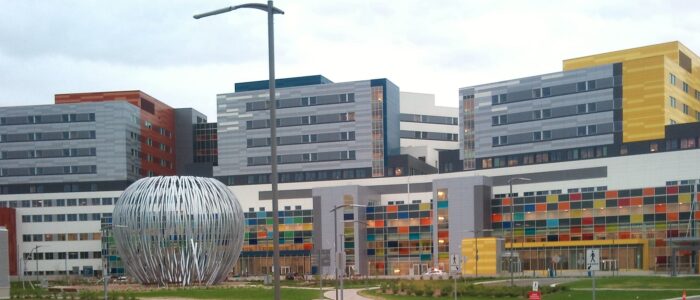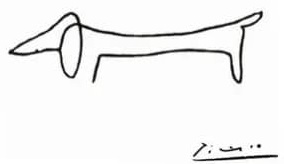Annual Financial Report 2024: CA$ 2.329M (page 22)
University of Guelph | Physical Resources

Originally posted January 2014
In these clips — selected from Canadian Parliamentary debate in 2013 — we observe three points of view about Incorporation by reference (IBR); a legislative drafting technique that is the act of including a second document within a main document by referencing the second document.
This technique makes an entire second (or referenced) document a part of the main document. The consensus documents in which we advocate #TotalCostofOwnership concepts are incorporated by reference into legislation dealing with safety and sustainability at all levels of government. This practice — which many consider a public-private partnership — is a more effective way of driving best practices for technology, and the management of technology, into regulated industries.
Parent legislation — such as the Higher Education Act of 1965, the Clean Air Act and the Energy Policy Act – almost always require intermediary bureaucracies to administer the specifics required to accomplish the broad goals of the legislation. With the gathering pace of governments everywhere expanding their influence over larger parts of the technologies at the foundation of national economies; business and technology standards are needed to secure that influence. These standards require competency in the application of political, technical and financial concepts; competencies that can only be afforded by incumbent interests who build the cost of their advocacy into the price of the product or service they sell to our industry. Arguably, the expansion of government is a reflection of the success of incumbents in business and technical standards; particularly in the compliance and conformity industries.



About two years ago, the US debate on incorporation by reference has been taken to a new level with the recent statement released by the American Bar Association (ABA):
16-164-Incorporation-by-Reference-ABA-Resolution-and-Report
The American National Standards Institute responded to the ABA with a statement of its own.
16-164-ANSI-Response-to-ABA-IBR-06-16 (1)
The incorporation by reference policy dilemma has profound implications for how we safely and economically design, operate and maintain our “cities-within-cities” in a sustainable manner but, admittedly, the results are only visible in hindsight over a time horizon that often exceed the tenure of a typical college or university president.
A recent development — supporting the claims of ANSI and its accredited standards developers — is noteworthy:
U.S. District Court Rules in Favor of Copyright Protection for Standards Incorporated by Reference into Federal Reg https://t.co/Tw2OnpMqua pic.twitter.com/i84fjUvQDS
— ANSI (@ansidotorg) February 13, 2017
The National Institute for Standards and Technology (NIST) manages a website — Standards.GOV — that is a single access point for consensus standards incorporated by reference into the Code of Federal Regulations: Standards Incorporated by Reference Database. Note that this database does not include specific reference to safety and sustainability codes which are developed by standards setting organizations (such as NFPA, ICC, IEEE, ASHRAE and others) and usually incorporated by reference into individual state public safety and technology legislation.
LEARN MORE:
We applaud the Federal Government’s commitment to fund free access to the National Building Codes that are developed by the @NRC_CNRC. As a not-for-profit developer of standards that contribute to the health, safety and well-being of Canadians, CSA Group…https://t.co/QqhdkDvb7s pic.twitter.com/1KRDvxDTaC
— CSA Group (@CSA_Group) November 23, 2018
University of Toronto Asset Management Corporation Report | $8.2B
Jordan Peterson was a Professor at the University of Toronto St. George
“The Discovery of Insulin” 1921
At the beginning of the 20th century, a diagnosis of Type 1 diabetes was a death sentence. Scientists on the faculty of the University of Toronto discovered insulin; thus saving millions of lives around the world.@UofT https://t.co/EG6fHVQKPK pic.twitter.com/yweLJiNDI4— Standards Michigan (@StandardsMich) July 2, 2024
#UofT and its hospital partners are celebrating the life and legacy of Professor Emeritus James Till, whose research demonstrated the existence of stem cells and fundamentally transformed the field of medical science. https://t.co/1l3w4XdUwP pic.twitter.com/lLPKXkjGAp
— University of Toronto (@UofT) June 4, 2025
Art presents a different way of looking at things than science;
one which preserves the mystery of things without undoing the mystery.
Everyone would basically be 50% happier if everyone dressed a little better. Clothes are everywhere. Everyone doesn’t have to be a clothes hound, but if the girls looked pretty and the guys looked nice, people would be happier and even more optimistic about the future. pic.twitter.com/iQcNPL1cMl
— O.W. Root (@NecktieSalvage) July 17, 2024
Helpppp! Got a black tie wedding next month 💒 and narrowed the dresses down to four!! But which one?! pic.twitter.com/f4XZmXeJx4
— Miss Gauld (@miss_gauld) April 5, 2024
Speaking of storms…Photo of an apple orchard in Ireland after a storm.
by Tony Egan pic.twitter.com/EFWQzCtUkz— Edward Elderman (@edwereddie) October 10, 2024
Health Canada: Food safety standards and guidelines
University of Vermont: Poutine: From Rags to Riches

Dalhousie University researcher Sylvain Charlebois, known as “the food professor,” enjoys a poutine at a restaurant in Brisbane, Australia.
‘Girls tell about their time at Canadian College of English Language’https://t.co/SKYf5gNZLXhttps://t.co/fsQaxC1L69 pic.twitter.com/FBywkbB1BY
— Standards Michigan (@StandardsMich) July 1, 2024
“An alleged scientific discovery has no merit
unless it can be explained to a barmaid.”
“Radio Transformations” 1906, Ernest Rutherford
Financial Statements 2023 | ($-14.834 M) Deficiency excess of revenue over expenses
Art & Science of Cold Brew & Why
McGill figure parmi les meilleures universités du monde. 🌎 Classée 27e au palmarès 2025 du Center for World University Rankings, elle se situe dans le top 0,2 % des 21 462 établissements évalués
➡️https://t.co/4YLh3B1sWN pic.twitter.com/ZpQUShTsFD
— McGill University (@mcgillu) June 4, 2025
This content is accessible to paid subscribers. To view it please enter your password below or send mike@standardsmichigan.com a request for subscription details.
Financial Statement: An apparent CA$40.193 shortfall | National Building Code of Canada
Dal Student Life: Our Favorite Coffee Shops
This is what Canadians built before the country went insane pic.twitter.com/iZ5xZiMJxH
— Jeremy Wayne Tate (@JeremyTate41) February 2, 2024
Financial Statement 2024: C$1.411B
Walking the Dog
— Billy Collins
Two universes mosey down the street
Connected by love and a leash and nothing else.
Mostly I look at lamplight through the leaves
While he mooches along with tail up and snout down,
Getting a secret knowledge through the nose
Almost entirely hidden from my sight.
We stand while he’s enraptured by a bush
Till I can’t stand our standing any longer
And haul on the leash to bring him away.
He lives in the moment, which is good for him,
But when I see a stone wall, I think of Greece,
The sort of place he’d have a lot to say about—
The sniffable pots and broken statues,
The seas, the Ionic evenings all in a row.
But he just gives a yelp and comes running over
To smell my palm, and what can I do but
Smile and bend down to give him a hello?

Congrats on earning your bark-elor’s degree 🐾 🎓 pic.twitter.com/X35yiNPOer
— York University (@YorkUniversity) June 13, 2025
York University Facilities Services
This content is accessible to paid subscribers. To view it please enter your password below or send mike@standardsmichigan.com a request for subscription details.
New update alert! The 2022 update to the Trademark Assignment Dataset is now available online. Find 1.29 million trademark assignments, involving 2.28 million unique trademark properties issued by the USPTO between March 1952 and January 2023: https://t.co/njrDAbSpwB pic.twitter.com/GkAXrHoQ9T
— USPTO (@uspto) July 13, 2023
Standards Michigan Group, LLC
2723 South State Street | Suite 150
Ann Arbor, MI 48104 USA
888-746-3670
